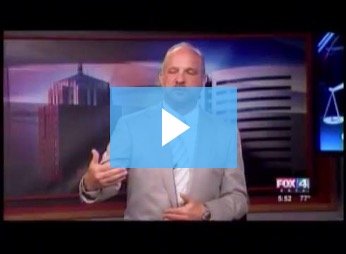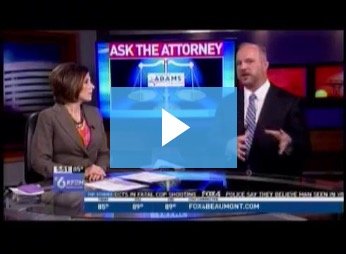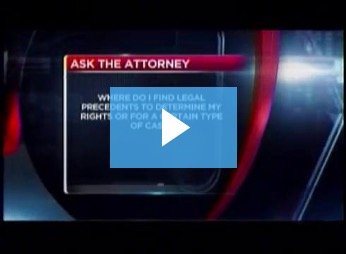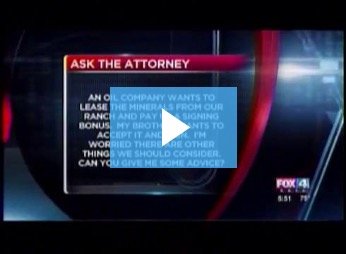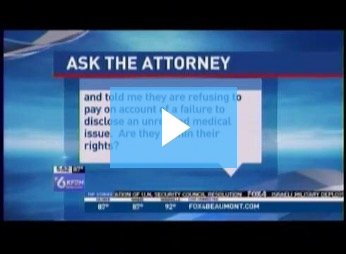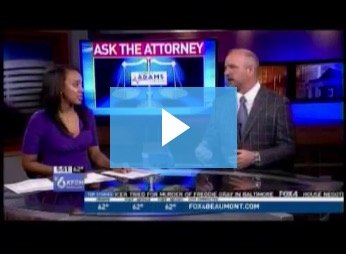Personal Injury Newsletter
Lawsuits Against the State for Faulty Highway Design and Maintenance
Governments and government agencies are potentially liable for accidents caused, in whole or in part, by defects in highway design and maintenance. Such liability is heavily dependent on local law and the extent to which the doctrine of “sovereign immunity” is enforced in a particular state.
Sovereign Immunity
The doctrine of “sovereign immunity” was inherited from English common law, i.e., principles generally derived from rulings in court cases. The doctrine historically shielded governments (federal, state, and local) from liability in suits. Governments could not be sued unless they agreed to be sued, and were generally not held responsible for the acts of their employees. There was a fear that governments would be overwhelmed with litigation if lawsuits were permitted against them, resulting in high costs that ultimately would be borne by the public. Critics of sovereign immunity cited the unfairness of depriving individuals of the right to recover damages from those who caused injury.
A landmark 1842 case articulated a limitation on this immunity: immunity exists for “government” functions, which can only be performed by governments, such as police and fire protection, but not “proprietary” functions,” that could be supplied by private concerns, such as providing electricity or gas. Whether a function was governmental or proprietary was the subject of much litigation, but courts generally agreed that design and maintenance of roads is proprietary in nature, and therefore subject to liability.
In 1946, Congress passed the Federal Tort Claims Act, which authorized suits against the federal government under certain circumstances. By 1996, most states had also abolished or modified their sovereign immunity through court decisions or statutes. Immunity can depend on whether the government agency being sued is a state or local agency or whether the state legislature gave permission for the suit. There may also be limitations on the amount that can be recovered from the agency.
Possible Duties of DOT’s and Other Agencies
Usually a state agency, such as a department of transportation (DOT), is charged with proper care in the design, construction, and maintenance of highways. In states where such agencies may be sued, many courts and authorities have held that they have a duty to exercise reasonable diligence to maintain streets and highways in a reasonably safe condition for their common use. This has been interpreted to include a duty to inspect, warn of unsafe conditions (after receiving notice of such conditions), and to make repairs. Actions against a DOT or other agency are usually based on negligence theories arising out of the duties, i.e., there was a breach of duty, which proximately caused injury.
What constitutes “reasonably safe conditions” varies from state to state and case to case. Factors which some courts and authorities have looked at to make this determination include:
- Whether the condition conforms to generally accepted engineering principles, and/ or did conform to such principles at the time of construction or modification. Government manuals, such as “A Policy on the Geometric Design of Highways and Streets” (the “Green Book”) are often consulted.
- The severity of harm posed by a particular condition.
- The likelihood that someone will be harmed by the condition. The frequency and severity of accidents in the area are often considered.
- The availability of ways to correct the condition.
- The usefulness of the condition for other purposes.
- The burdens of removing or correcting the condition.
- Opinions of expert witnesses.
Sources of Roadway Liability
Some accidents may be due to faulty road maintenance, while others may be caused by design defects. Examples of roadway liability resulting in awards against DOT’s and other agencies include:
- Roadway defects such as potholes, ridges, bumps, slick pavement, and fallen trees. The duty associated with these defects may be to warn and repair, after receiving sufficient notice of such defects.
- Roadside defects, such as pavement drop offs, steep embankments, and fixed object hazards (posts, guardrails, traffic barriers, etc.). These are generally related to design issues.
- Defects in items associated with roads, such as traffic signals, signs, and crash barriers.
- Defects associated with bridges, culverts, detours and railroad crossings.
Case Examples
In a suit against the State of New York, a motorcyclist sued for damages he received to his foot and ankle when he fell after hitting an unrepaired pothole. He was awarded $278,188, as New York failed to timely repair the pothole. Similarly, the Georgia DOT was held liable for placing only two stop signs at an intersection during a project extending a highway. A car driven by Elsie Colbert entered the intersection and was struck by a dump truck. Colbert and her two passenger daughters died in the collision. The trial court found sufficient evidence that the intersection failed to comply with “generally accepted engineering and design standards.”
On the other hand, a Louisiana court found that a steep embankment did not present an “unreasonable risk of harm,” when a car with a driver and four passengers veered onto the shoulder, went over the embankment, crashed, and burst into flames. Three passengers died. The driver was intoxicated at the time. It was argued that lack of a guard rail constituted a design defect, but the court disagreed. The court also determined that the embankment was necessary for local drainage.
Affirmative Defenses
In such cases, the government, DOT, or other agency sued may raise affirmative defenses. Depending on the state, this may mean that the driver was guilty of contributory or comparative negligence, such as the driver driving while intoxicated in the above case. If successful, such a defense can eliminate or reduce the damage award.
© 2024 NextClient.com, Inc. All rights reserved.



